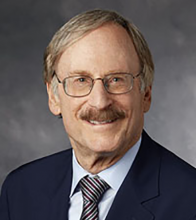You are here
America's economy on the edge
Jul 03,2023 - Last updated at Jul 03,2023
STANFORD — Most major economies are flirting with, or tipping into, recession. While Canada and Sweden appear to have just pulled themselves back from the brink, Germany, Europe’s largest economy, is already in a technical recession, following two consecutive quarters of negative growth.
In China, the world’s second-largest economy, and a major source of global growth in the years before the pandemic, the post-COVID rebound has already fizzled, leading the government to roll out a new stimulus plan. And while the US economy appears to have avoided a recession so far, many forecasters still expect a mild one in the coming months, with the Conference Board’s index of leading economic indicators continuing its 14-month decline.
Though labour is the largest cost for most firms, hiring in America has continued even amid growing concerns about declining orders. How should we read these mixed signals?
As I have suggested for some time, labour hoarding seems to be an underappreciated but increasingly important factor in today’s economy. Companies are reluctant to lose workers, owing to the growing difficulty of finding and retaining talent. Layoffs, so far, have been concentrated in the technology sector, which over-hired during the pandemic.
While the monthly establishment survey by the US Bureau of Labour Statistics suggests that the economy is still producing hundreds of thousands of net jobs per month, the agency’s separate household survey shows far less job growth. Moreover, initial claims for unemployment insurance have ticked up, and the average workweek has ticked down, both of which are sometimes early warning signs of a recession.
What about the stock market? On one hand, stock prices embody forecasts of future corporate profits, which are one of the economy’s most procyclical components. After plunging in 2022, US equities have rebounded strongly this year. On the other hand, the recovery has been concentrated in Big Tech, and, as the Nobel laureate economist Paul Samuelson famously observed, the stock market is not always the best leading indicator (it “predicted nine of the last five recessions”).
Much will depend on monetary and fiscal policy. While the massive, highly stimulative responses to the COVID recession were justifiable (if far from perfect), their continuation even as the economy approached full employment helped cause the worst inflation in 40 years.
After a long period of near-zero interest rates, the US Federal Reserve had to play catch-up with a series of rapid rate hikes. It paused in June, but Fed Chair Jerome Powell hinted that there could be two additional 25-basis-point increases beginning in July. That would bring the Fed’s policy rate up to 5.5-5.75 per cent, which is above the 12-month lagging core inflation rate and the Fed’s expectations of year-ahead inflation.
Generally speaking, central banks want their short-run target rate to exceed expected inflation for some time, owing to Milton Friedman’s concept of the long and variable “lag in effect of monetary policy”. It takes time for the economy to slow enough to reduce price pressures and wage demands. But in the current context, the Fed’s rapid rate hikes produced an inversion of the yield curve, another typical leading indicator of a recession, and contributed to the failure of several midsize US banks.
Should a recession now occur, it will be one of the most widely predicted in history. But if it does not, it will be one of the economic forecasting community’s biggest misses.
Still, the situation today is somewhat unprecedented for the United States. Never has government spending increased so massively at a time when the economy was already at full employment. While the White House and Congress were able to reach an agreement to suspend the debt limit and place some modest constraints on spending, the big budget battles are yet to come.
Among other things, US President Joe Biden wants large corporate-tax increases and taxes on capital gains as they accrue, rather than when an asset is sold, and Secretary of the Treasury Janet L .Yellen is pushing a global minimum tax deal that would raise taxes on US multinational companies. But the latter proposal is unlikely to pass muster in the US Senate, as many treaty alterations would require a two-thirds majority.
For their part, Republican presidential candidates oppose higher taxes and may want to make permanent various expiring provisions of the 2017 tax cuts. There is also likely to be a battle over defense spending, which currently is not on track to keep pace with inflation. These issues will make for major policy fights, exacerbated by large cash shortfalls in Social Security and Medicare looming in a few years.
Decades of experience across the OECD show that successful fiscal consolidation, both in strengthening the budget position and avoiding recession, has focused overwhelmingly on curtailing spending. This is not surprising. Keeping marginal tax rates on savings, investment, and work at a modest level is crucial for the supply side of the economy.
While higher marginal tax rates are usually thought to affect growth only over the longer term, Casey Mulligan of the University of Chicago has shown that they were a major drag after the Great Recession, the slowest recovery of any since World War II. Similarly, a 2004 study by the late Nobel laureate economist Ed Prescott concluded that virtually all of Western Europe’s huge per capita income shortfall relative to the US is due to higher taxes. (Even if this overstates the case, taxes are undeniably a major factor.)
Responding to America’s debt and entitlement-cost crises with higher taxes would be both risky in the short term and dangerous for America’s long-term economic prosperity. Turning the US into a European-style welfare state would reduce future opportunities precisely for those who have not yet made it up the economic ladder. These are the Americans whom the recent spending splurge was putatively designed to help. On balance, it probably did the opposite.
Michael J. Boskin, professor of Economics at Stanford University and senior fellow at the Hoover Institution, was chairman of George H.W. Bush’s Council of Economic Advisers from 1989 to 1993. Copyright: Project Syndicate, 2023.














